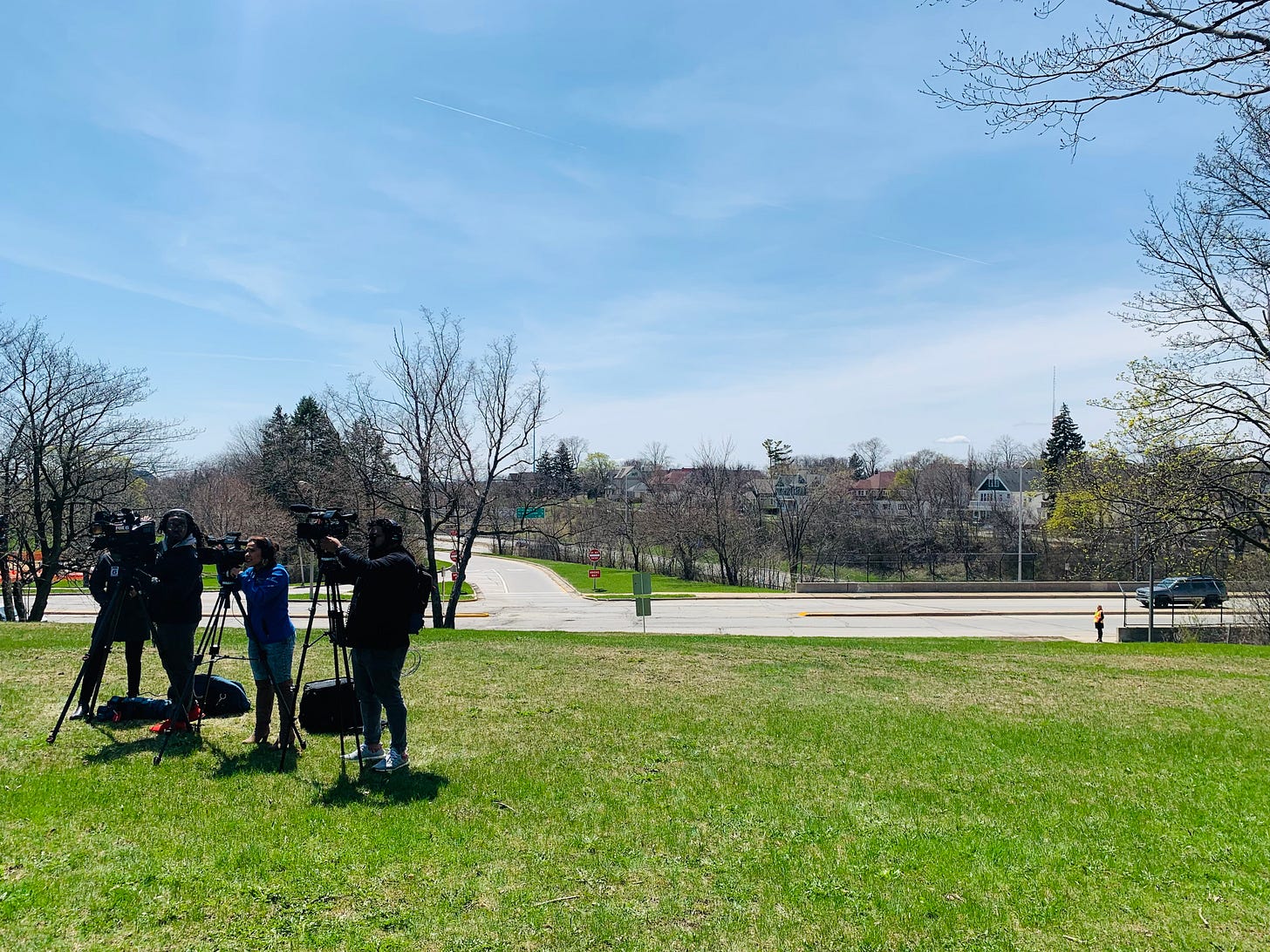Q&A: Evan Goyke on the Stadium Freeway
"What might come out of this project is the type of infrastructure that actually brings us together."
The Recombobulation Area is a six-time Milwaukee Press Club award-winning weekly opinion column and online publication written and published by veteran Milwaukee journalist Dan Shafer. Learn more about it here.

At the press conference announcing a new study to reimagine the future of the Stadium Freeway, the speakers — Secretary of Transportation Craig Thompson, Milwaukee County Executive David Crowley and Mayor Cavalier Johnson — each thanked the same individual for his longtime advocacy on converting the Stadium Freeway to a boulevard. That individual was Evan Goyke, the state representative from the 18th District on Milwaukee’s west side, who has represented that district since 2013.
After the press conference, we caught up with Goyke for a quick chat to talk about this big announcement for Milwaukee.
Dan Shafer: Everyone at the press conference has credited you with championing this for more than a decade. Tell me about what got you interested in it and what it feels like to see this announcement today.
Evan Goyke: I've always been curious about how we could better connect the south side and north side. You know, most connections are elevated viaducts. It's really hard to get to the south side, on foot or on a bike, or public transit. So I've always looked at, could this be a connector?
In 2012, I was campaigning, and I was on a bike, and I was trying to cross Lisbon Avenue. And I sat there and sat there and sat there. And it was never safe to cross. I actually had to go out of my way a few blocks, turn around and come back just across the street. And you start to look at how and what makes that street so busy and so pedestrian unfriendly, and you start to see, well, it's because there's this freeway-like spur that dumps a lot of cars at high speed into the city grid at that Lisbon-North Avenue intersection.
The other thing is the history of this freeway spur, it was built to connect to other freeways that were never built. And so it's kind of leg one of several. And so we should be asking questions: Does it serve a purpose because its connector freeways were never built? And that's what this study, I think, in part is going to do. What is the traffic volume? Who is using it? I represent neighborhoods where some of the heavy industrial users of 175 have to take circuitous neighborhood streets to get to their brewery or to their foundry. And so heavy trucks don't want to drive through neighborhoods and neighbors don't want heavy trucks driving through their neighborhood. And so I'm hopeful in this study, we can examine, is there a better, more efficient way to serve the business and industry that uses 175? I don't think these questions have been asked. So, it's a good opportunity to do so.
Keep reading with a 7-day free trial
Subscribe to The Recombobulation Area to keep reading this post and get 7 days of free access to the full post archives.


